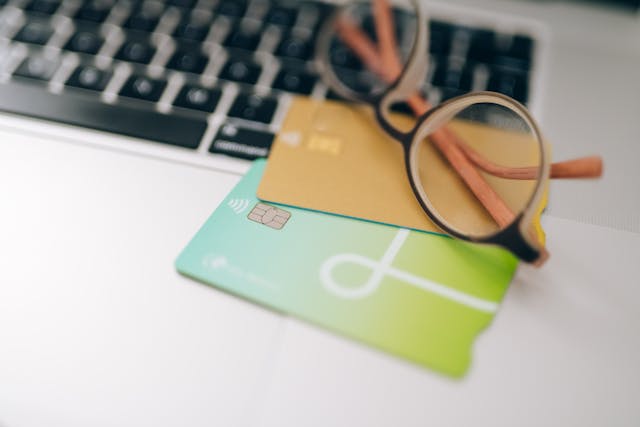Sometimes, life doesn’t ask for a big loan—it asks for just enough. A little extra to cover car repairs before payday. A buffer for unexpected travel. Maybe a cushion during a slow season if you freelance or run your own business. That’s where a line of credit can quietly step in and save the day.
Unlike traditional loans that hand over a lump sum and expect fixed payments on a rigid schedule, a line of credit gives you control. You borrow what you need, when you need it, and only pay interest on what you use. It’s not about taking on more debt. It’s about staying ready.
If you’ve heard of services like the Net Pay Advance line of credit, you already know this kind of financial tool is designed for real life—less about long applications and more about fast access and flexible terms. And in a time when many are rethinking how and when they borrow, this type of product is catching serious attention.
Let’s break down how lines of credit work, why flexibility matters, and how smart borrowers are making the most of revolving access.

What Is a Line of Credit, Exactly?
A line of credit is a borrowing option that stays open—like a tab you can dip into when needed. Think of it as a reusable pot of money with a set credit limit. You can borrow from it, pay it back, and borrow again as long as you stay within the terms.
There are two main types:
- Secured line of credit – Backed by collateral like a home or savings account. (Often used in home equity lines.)
- Unsecured line of credit – Not backed by collateral, but typically has a lower limit and may have a higher interest rate.
While businesses have used lines of credit for years to manage cash flow, personal credit lines have gained popularity as more people look for borrowing options that aren’t all-or-nothing.
How It’s Different from a Traditional Loan
If a loan is a one-time deal, a line of credit is more like a subscription to cash access. Here’s a quick comparison to make that clearer:
| Feature | Traditional Loan | Line of Credit |
| Borrowing structure | Lump sum | Reusable funds |
| Repayment | Fixed monthly payments | Varies based on balance used |
| Interest | On full amount borrowed | Only on what you use |
| Flexibility | Low | High |
| Typical use case | Large, one-time expenses | Ongoing or unpredictable expenses |
This difference makes credit lines ideal for people who don’t always know how much they’ll need—or when.
Why Borrowing Behavior Is Changing
People aren’t just looking for money—they’re looking for options. Over the past few years, financial flexibility has gone from nice-to-have to non-negotiable. Here’s why lines of credit are hitting the sweet spot for more and more borrowers:
1. Unpredictable Expenses Are the New Normal
Emergency vet visit? A dental bill your insurance barely touched? A paycheck arriving later than expected? The “surprise cost” category has grown fast—and not everyone wants to use a credit card with sky-high rates to cover it.
2. People Want to Borrow Less, Not More
Lump-sum loans can be tempting, but they often mean taking on more debt than needed. Lines of credit support restraint. You borrow only what makes sense.
3. Speed and Convenience Matter
No one has time for a lengthy approval process when the fridge breaks. Online access, minimal paperwork, and fast decisions make revolving credit far more practical.
Real-Life Scenarios Where a Line of Credit Helps
Let’s put theory aside and talk about where this actually makes a difference:
Covering a Gap Between Paychecks
You’ve got bills due on the 10th, but payday isn’t until the 14th. Rather than overdrafting or bouncing payments, a quick draw from your credit line can carry you over.
Helping Freelancers Manage Uneven Income
Say you’re a freelance designer. Some months are packed with projects; others are bone dry. Instead of panicking or using high-interest credit cards, a line of credit gives you breathing room.
Handling a Minor Medical Expense
Your insurance covered most of it, but you’ve still got a $300 co-pay. You don’t want to drain your savings. Tap your credit line, pay it off next paycheck, and move on.
Repairing a Car… Again
It’s not a major engine overhaul—just new tires and brake pads. It adds up, though. With a credit line, you can break it into smaller payments without entering long-term debt.
What Makes a Good Credit Line?
Not all credit lines are created equal. Before jumping in, borrowers should consider a few key things:
Credit Limit
How much can you access? Is it enough for your typical needs—but not so high it’s tempting to overspend?
Interest Rate
Some providers offer daily or monthly interest accrual. Always check whether it’s simple interest or compounded, and whether it’s competitive compared to similar products.
Fees
Look out for hidden fees like maintenance charges, late payment penalties, or draw fees. Many of today’s providers offer transparent, no-surprise terms.
Ease of Access
Is the line accessible online or through an app? Can you draw funds quickly? The more seamless the experience, the more useful it becomes.
Tips for Using a Line of Credit Wisely
A line of credit can either be your best financial backup—or just another stressor if misused. These habits keep you in the safe zone:
Borrow With Purpose
Avoid using your credit line for impulse buys. Treat it as a safety net or strategic cash tool—not an open invitation to spend.
Track What You Draw
It’s easy to forget how much you’ve borrowed if it’s done in small amounts. Keep a mental (or written) tally and check your balance often.
Make Timely Payments
Even if minimum payments are allowed, aim to pay more than that. This minimizes interest costs and helps you keep your credit healthy.
Know When to Say No
If you’re regularly maxing out your credit line to cover recurring bills, it may be time to look at your budget. A credit line should bridge gaps—not become a long-term crutch.
The Future of Borrowing Is Flexible
Financial products are evolving alongside consumer expectations. Just like streaming replaced DVDs and ride-shares replaced cab lines, flexible borrowing is slowly replacing rigid, outdated loan models.
Lines of credit reflect this shift. They aren’t just about access—they’re about empowerment. When people can borrow on their own terms, they’re more likely to make smart choices, respond to life’s curveballs, and stay out of serious debt.
In short? Flexibility doesn’t mean financial chaos. It means control.
Final Thoughts
Borrowing doesn’t have to feel like a commitment you’ll regret. A line of credit offers a more fluid, modern way to access money—without locking you into something you don’t need.
It works for the planner and the procrastinator. The business owner and the gig worker. The person who just wants to breathe a little easier knowing that if something unexpected comes up, they’ve got a reliable, low-stress option right there.
So whether you’re looking for a better way to handle emergencies or simply want to rethink how you borrow, it may be time to consider the quiet power of revolving access.
Sometimes the best financial safety net isn’t a bigger loan—it’s smarter borrowing.



Leave a Reply